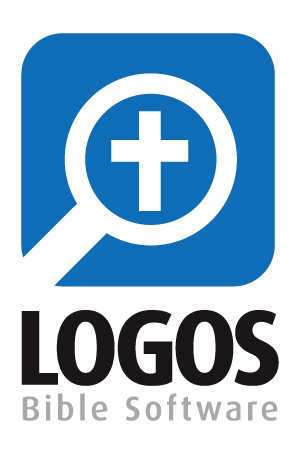Logos 6 Bible Software Review - Part 1
[Disclaimer: I received the new Logos 6 Gold from Faithlife (the new parent company of Logos and the related software and online services) as an upgrade to my existing Logos 5 Gold. The only stipulation was that I write a fair and honest review and post it on this blog.]
I have long used Logos Bible software and have reviewed versions and aspects of it in the past. I have primarily used it for original language study of the Bible and to gain access to the numerous primary and secondary resources available for Bible study.
Background, Packages, Upgrades:
In the history of Logos, there was a significant transition from (Libronix) version 3 to (Logos) 4. The transitions from versions 4 to 5 and now from 5 to 6 have been incremental, but in both instances have shown significant enhancements and important resource additions. As has become their practice, Logos 6 is offered in a range of "families": Starter, Bronze, Silver, Gold, Platinum, Diamond, Portfolio, and Collector's. These range in price from $295 to $10,800, but there are regular sales (e.g., currently 15% off as I write) and academic discounts available. There are similarly priced tradition-specific packages that have a different collection of resources that include more denomination theological resources than biblical or generic ones. (Anglican, Baptist, Lutheran [HERE is my review of Lutheran Gold], Pentecostal & Charismatic, Reformed, and SDA. Verbum is the analogous package for Roman Catholicism.)For existing Logos users, there are a number of options for moving to Logos 6.
- Getting the free engine update: This allows one to keep all existing resources, provides the new interface, but does not add any new datasets, resources, or related features. It will probably be released in February 2015 or so.
- Crossgrade: A crossgrade assumes you have an existing Logos library, and the price to crossgrade depends on whether you want a "core," "feature," or "extended" crossgrade. The core crossgrade only give you the new Logos 6 tools and media. The feature crossgrade adds the new datasets, and the extended crossgrade adds new resources. A crossgrade can still be somewhat expensive (for my existing Gold library, the cost would have been $124, $175, or $226 after discounts), and in my case, it would have made more sense to upgrade and gain even more resources for a marginally greater expense.
- Upgrade: A person retains rights to the resources in your existing library, but in upgrading to Logos 6, you have the option of moving up at the same level or to another package like the ones I listed earlier. The Logos website provides tools for comparing what is new in Logos 6 and what would be new for you depending on your upgrade package.
Installation and Getting Started
Installation is straightforward and occurred without incident. Upon placing the order for the crossgrade or upgrade, users receive a confirmation email with a download link. This is just a small installer file. Run it, and when Logos starts, it will also begin downloading all the applicable new resources and datasets and updates. Logos takes care of things without user intervention. The main thing is to have a fast Internet connection and allow plenty of time for all the downloads to occur. (In my case, with a good connection and fast computer, it took about 15 minutes, but Logos has had regular download updates ever since.) You also have to allow time for Logos to index its resources. This runs in the background (and can be paused if you want) and can potentially slow down other computer functions.If you are already using Logos 4 or 5, you should be able to start using the program right away since the interface is largely unchanged. For those less familiar with Logos, they have quite a few resources for getting you started. For basic training, start HERE and choose your platform (Windows, Mac, iPhone/iPad, Kindle Fire, Android). A desktop/laptop device is where Logos best displays its capabilities, and training for that is HERE. There are 28 quickstart videos which will show both old and new users some of the capabilities of the program and how to use them.
I am using Logos6 on a Windows 7 SP1 system with 12GB RAM, Intel i7 at 3.40GHz, and the program running on a SSD drive. I.e., though this system is now 2.5 years old, it is still decently fast. Complicated searches may take a bit to run, but in general the program runs acceptably well without any annoying lag. Logos does suggest some ways to optimize performance that help if you have a slower system.
In Part 2, I will describe some of the new features to Logos6 that I most appreciate.

